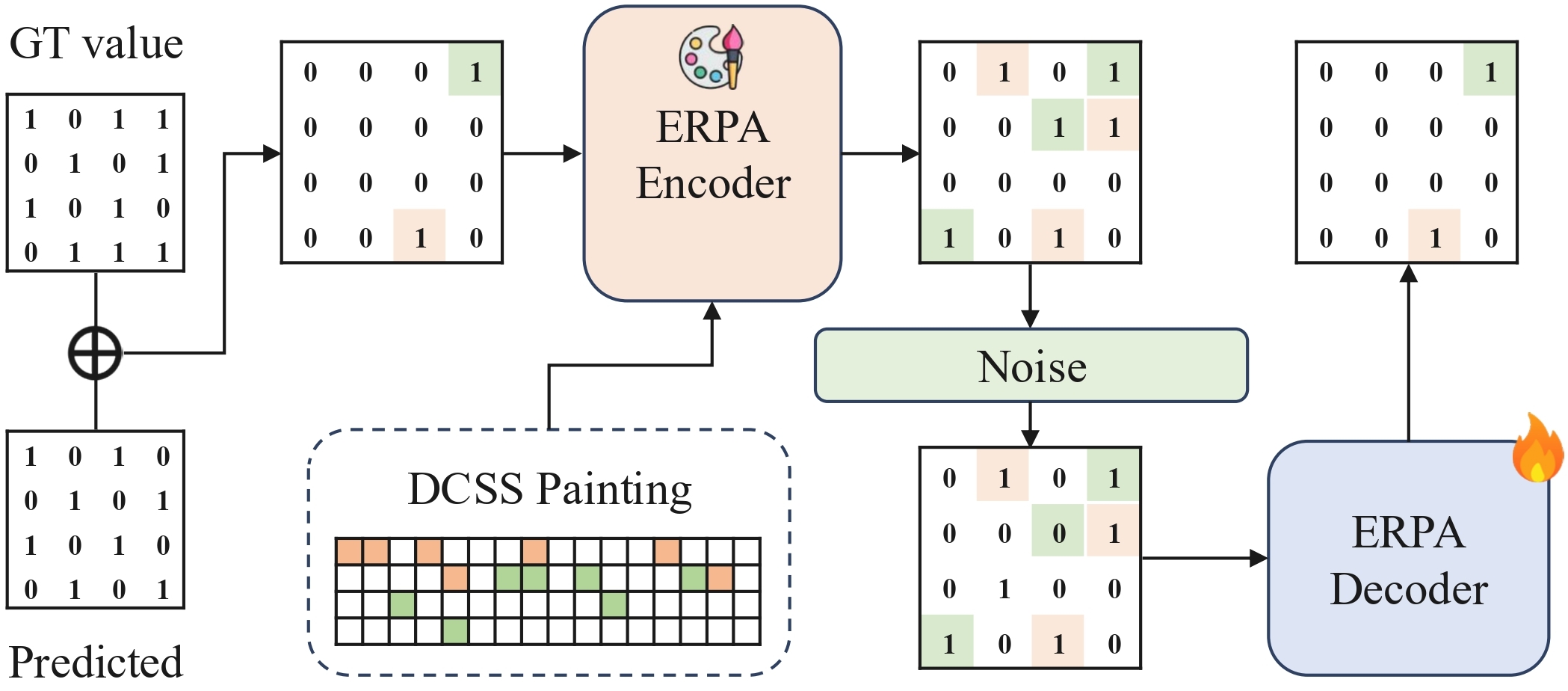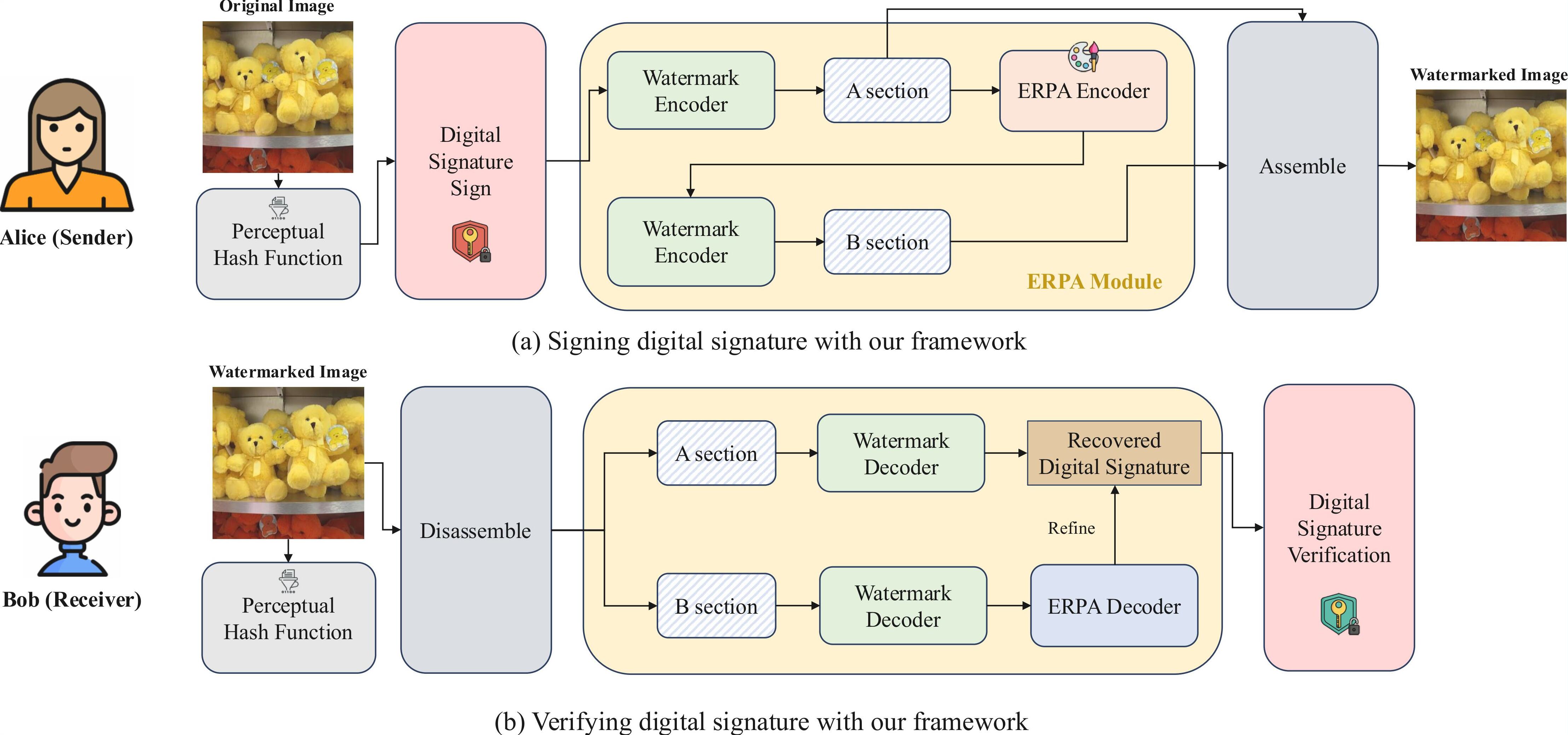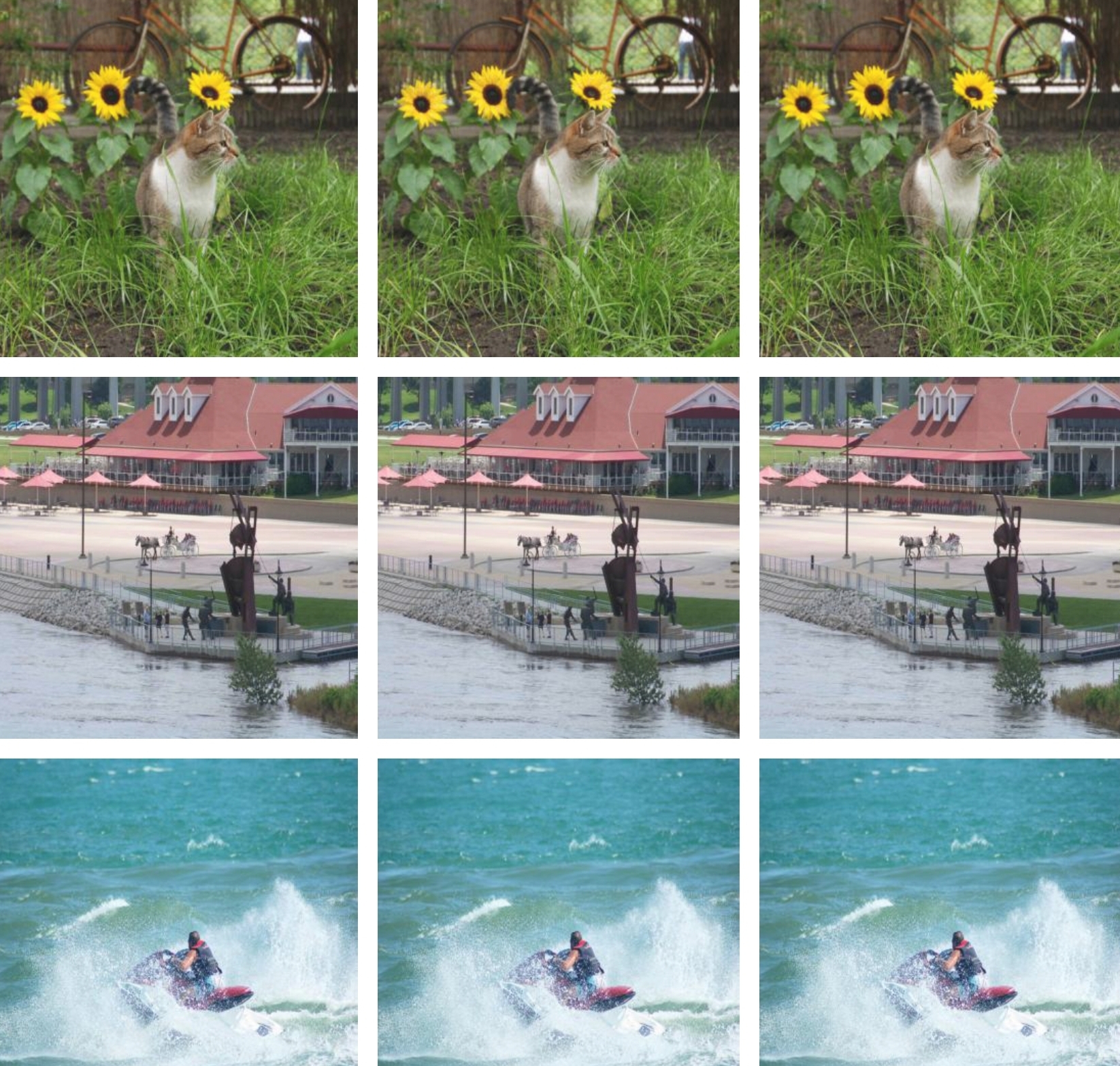
We report PSNR, SSIM, BER, and Zero BER Image Rate (Z.B.I.R) to
assess both visual fidelity and reliable message recovery. M.L.
is the maximum embeddable message length, while Eval. Payload is
the actual payload used in evaluation, adjusted to account for
ERPA's redundancy. Paired settings use equal Eval. Payload for
fair comparison. With ERPA, the system achieves 100% Z.B.I.R
under near-ideal conditions, ensuring robust signature
verification without sacrificing visual quality. This
demonstrates that our method meets the dual demands of
perceptual fidelity and cryptographic reliability, making it
suitable for our framework.

In the 8 × 8 grid setting required by our framework, Z.B.I.R is
reduced to just 1.2%. However, ERPA significantly improves
robustness. In our README framework, BER dropped from 0.6679 to
0.1395, while Z.B.I.R rose dramatically from 1.2% to 86.3%.
These improvements demonstrate that ERPA enables
cryptographic-level reliability even under distortion,
validating its effectiveness as a lightweight, model-agnostic
enhancement. These results confirm that the proposed framework
enables reliable digital signature embedding while preserving
the model's robustness, even under image distortions.




